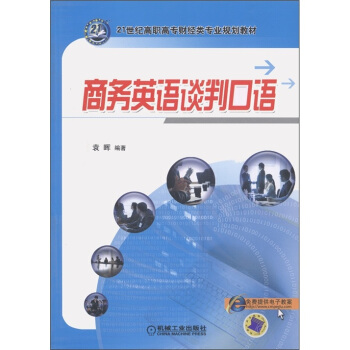- 高等教育出版社
- 9787040345308
- 1版
- 156011
- 0045155106-3
- 特殊
- G115
- 通用
- 本科
李萌羽等编著的《跨文化交际教程》是一本专门为中国读者编写的跨文化交际学教材,由中国海洋大学李萌羽博士和美国跨文化交际学创始人之一麦克.H.普罗斯教授编著,同时邀请了诸多来自世界不同国家和文化背景的作者撰稿,是一部真正体现了多元文化特色的教材。本教材既充分借鉴了国内外跨文化交流学科的前沿知识,全面、系统介绍了跨文化交流学科的核心内容,又充分展现了各国丰富多彩的文化和交流模式,同时凸显了中国文化特色。
《跨文化交际教程》共分为10章,就每章结构而言,主要由以下模块构成:1.导入对话;2.学科知识介绍;3.案例分析;4.本章小结;5.讨论思考题:6.推荐阅读材料。
Chapter One: Culture
1 Dialogue
2 Culture
2.1 Definitions and the Nature of Culture
2.2 Cultural Survival
2.3 Objective and Subjective Culture
2.4 Globalism, Globalization and Cultural Universals
2.5 Cultural Stability or Cultural Change
2.6 Multiculturalism and Cultural Diversity
2.7 Popular Culture
3 Case Studies
3.1 An Intercultural Chinese and British Marriage: Striking an Equilibrium, Lili Zhang, London
3.2 Korean Taekwondo Master Lee Meets Ms. Ruth: Ruth Lee, Virginia, USA
4 Summary
5 Questions for Discussion
6 Suggested Readings
Chapter Two: Communication and Intercultural Communication
1 Dialogue
2 Communication
2.1 Definition and Nature of Communication
2.2 Chinese Communication and the Civil Society
2.3 The Spectrum or Continuum of Intracultural, Intercultural and Multicultural Communication
2.4 Cross-cultural Communication
2.5 Intercultural Commtmication Competence (ICC)
2.6 Intercultural and International Ethical Communication
2.7 Intercultural Conflict Resolution
2.8 “Personal Motivational Persuasion” by the President of the United States to Michael Prosser
2.9 Analysis of President Obama's Personal Motivational Persuasion
2.10 Becoming Critical Thinkers
3 Case Study
4 Summary
5 Questions for Discussion
6 Suggested Reading
Chapter Three: Creating Our Own Cultural Stories
1 Dialogue
2 Li Mengyu's Cultural Story
3 Michael Prosser's Cultural Story
4 Cultural Stories of Several Young People :
4.1 My Cultural Background: William Zhu, Shanghai International Studies University
4.2 From the Mini UN to the Real UN: Zhang Jing, the United Nations, New York City
4.3 The Value of Family, Education, and a Girl with a Russian Passport: Anya Kylukanova, University of Oregon
4.4 Open Heart and Immense Patience: Michelle Cui, Trading Manager, Omicom Group, Chicago, Illinois
4.5 From an Ordinary Family: David Xu, Tongji University
4.6 The Story of My Nearly 30 Years: Jacky Zhang, Dezhou University
4.7 Seattle and Christ Church: Twin Cities: Zizi Zhao Zhao, Christ Church, New Zealand
4.8 A Third Culture Child?: Nick Deng, Yunnan Normal University
4.9 Lotus Seeds: Cindy Zhao, Shanghai
5 Case Study
6 Summary
7 Questions for Discussion
8 Suggested Readings
Chapter Four: Perceptions, Beliefs, World Views and Values
1 Dialogue
2 Perceptions
2.1 Defining Perception
2.2 Culture and Perceptions
2.3 Perceptions and Media
2.4 Defining Belief
2.5 Stereotypes and Prejudices
2.6 Attitudes and Values
2.7 World Views
2.8 Defining Values More Fully
2.9 The Significance of Values to Intercultural Communication
2.10 Comparing Eastern and Western Values
3 Case Study
4 Summary
5 Questions for Discussion
6 Suggested Readings
Chapter Five: Cultural Patterns and Cross-cultural Value Orientations
1 Dialogue
2 Understanding Cultural Patterns and Value Orientations
3 Chinese Scholars' Emphasis on Cultural Traits and Cultural Orientations
3.1 Gu Hongming's Study on Cultural Traits
3.2 Lin Yutang's Study on Cultural Characteristics
3.3 Hui-ching Chang's Study on Interpersonal Communication
3.4 Kwang-kuo Hwang's Study on Interpersonal Relationships
4 Western Contributions
4.1 Clyde Kluckhohn's and Fred Strodtbeck's Value Orientations
4.2 Geert Hofstede's National Value Dimensions
4.3 Edward T. Hall's Value Orientations
4.4 Fons Trompenaars's Value Dimensions
4.5 Shalom Schwartz's Societal Orientations
5 Chinese Value Orientations
5.1 The Influence of the Traditional Chinese Value Orientations
5.2 The Contemporary Chinese Value Orientations
6 Case Study
7 Summary
8 Questions for Discussion
9 Suggested Readings
Chapter Six: Verbal and Nonverbal Communication
1 Dialogue
2 The Nature of Language: Linguistic Aspects in Intercultural Communication
2.1 Defining Language
2.2 The Importance of Language to Intercultural Communication
2.3 The











